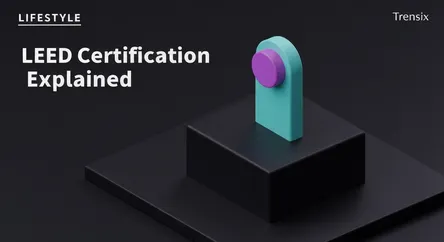Lifestyle
LEED Certification Explained

Discover LEED Certification, the global standard for green buildings. Learn how it promotes sustainability, saves money, and creates healthier spaces.
What is it?
LEED, or Leadership in Energy and Environmental Design, is the most widely used green building rating system in the world. Developed by the U.S. Green Building Council (USGBC), it provides a framework for creating healthy, efficient, and cost-saving green buildings. LEED certification is a globally recognized symbol of sustainability achievement. Projects earn points across categories like energy use and indoor environmental quality to achieve one of four levels: Certified, Silver, Gold, or Platinum. This system applies to nearly all building types, from new constructions to existing commercial interiors.
Why is it trending?
The push for LEED is driven by a global focus on environmental responsibility. Developers and corporations see that sustainable buildings are good for the planet and their finances, offering lower operating costs through reduced energy and water consumption. Many companies pursue LEED as part of their Environmental, Social, and Governance (ESG) strategies to enhance their brand image. Additionally, government incentives and a rising market demand for greener, healthier workplaces and homes are making sustainable design a key competitive advantage in the real estate sector.
How does it affect people?
LEED certification directly benefits both occupants and owners. For those living or working in a LEED-certified space, it means a healthier environment with better air quality and more natural light, which can improve well-being and productivity. For building owners, the advantages include significant utility savings, higher rental and resale values, and lower vacancy rates. These buildings are more resilient to rising energy costs and changing regulations, making them a smart, long-term investment that contributes positively to the community and the environment.